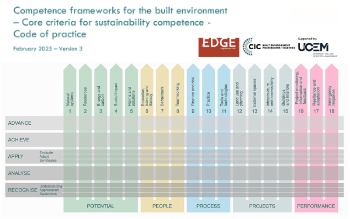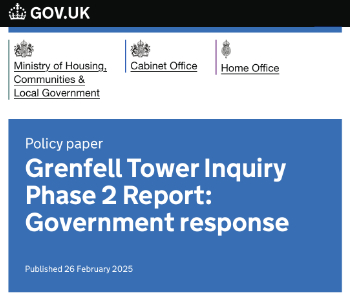Management contracting - pros and cons
Management contracting is a procurement route in which the works are constructed by a number of different works contractors who are contracted to a management contractor. The management contractor is generally appointed by the client early in the design process so that their experience can be used to improve the cost and buildability of proposals as they develop, as well as to advise on packaging and the risks of interfaces.
The agreement between client and management contractor is likely to cover both pre-construction and construction activities, with a notice to proceed between the two, before which works contracts cannot be let.
For more information see: Management contracting.
Management contracting can be beneficial on complex and/or specialist projects made up of a number of packages individually appointed to the best-suited subcontractor. This means that there is the potential for the highest-quality of delivery.
It can also be beneficial for the client in that they are able to retain control of the design while drawing on the experience and expertise of a construction specialist as part of the professional team, since the management contractor contributes to the design process. At the same time, the client is able to move risks or procurement and delivery onto the management contractor who is responsible both for project management and carrying out the works.
In addition, rather than the contractor tendering a fixed price, they can provide cost savings for the client, as well as time savings by tendering some of the work packages early (such as groundworks) and overlapping the design and construction activities. This allows for a quick start on site.
There can be also be considerable flexibility in the design, with changes being made throughout the construction process (albeit with potential cost implications).
However, it can be unsuitable as a procurement route for inexperienced clients since, although they can have more control over the design, works usually begin before the nature of the completed building is known. The lack of available specialists may also cause unproductive gaps in the work to be undertaken.
There is a body of opinion that believes that if a management contractor operating on a cost plus fee arrangement pursues a works contractor in court for non-performance, the management contractor is unable to prove loss and damages. This is because the loss is simply passed on to the client, and so it is the client that has incurred the damage. This has increased the tendency for clients to require direct warranties from each works contractor.
A decision needs to be made as to whether the client wishes to retain the services of both an independent cost consultant or to transfer cost planning, reporting and cost control as a service to be provided by the management contractor. A judgement has to be made on the competence and experience of the management contractor's proposed quantity surveying and cost estimating team and whether the client has a competent individual to police the financial aspects of the management contractor’s consultancy agreement.
[edit] Related articles on Designing Buildings
- Construction contract.
- Construction management contract.
- Design and build - pros and cons.
- Design build operate (DBO).
- Design liability.
- Employer’s requirements.
- Management Building Contract.
- Management contract: outline work plan.
- Management contractor.
- Traditional contract - pros and cons.
- Works contractor.
Featured articles and news
Sustainable Urban Drainage and Biodiversity
Awards for champions of these interconnected fields now open.
Microcosm of biodiversity in balconies and containers
Minor design adaptations for considerable biodiversity benefit.
CIOB student competitive construction challenge Ireland
Inspiring a new wave of Irish construction professionals.
Challenges of the net zero transition in Scotland
Skills shortage and ageing workforce hampering Scottish transition to net zero.
Private rental sector, living standards and fuel poverty
Report from the NRH in partnership with Impact on Urban Health.
.Cold chain condensing units market update
Tracking the evolution of commercial refrigeration unit markets.
Attending a conservation training course, personal account
The benefits of further learning for professsionals.
Restoring Alexander Pope's grotto
The only surviving part of his villa in Twickenham.
International Women's Day 8 March, 2025
Accelerating Action for For ALL Women and Girls: Rights. Equality. Empowerment.
Lack of construction careers advice threatens housing targets
CIOB warning on Government plans to accelerate housebuilding and development.
Shelter from the storm in Ukraine
Ukraine’s architects paving the path to recovery.
BSRIA market intelligence division key appointment
Lisa Wiltshire to lead rapidly growing Market Intelligence division.
A blueprint for construction’s sustainability efforts
Practical steps to achieve the United Nations Sustainable Development Goals.
Timber in Construction Roadmap
Ambitious plans from the Government to increase the use of timber in construction.
ECA digital series unveils road to net-zero.
Retrofit and Decarbonisation framework N9 launched
Aligned with LHCPG social value strategy and the Gold Standard.
Competence framework for sustainability
In the built environment launched by CIC and the Edge.
Institute of Roofing members welcomed into CIOB
IoR members transition to CIOB membership based on individual expertise and qualifications.
Join the Building Safety Linkedin group to stay up-to-date and join the debate.
Government responds to the final Grenfell Inquiry report
A with a brief summary with reactions to their response.





























Comments